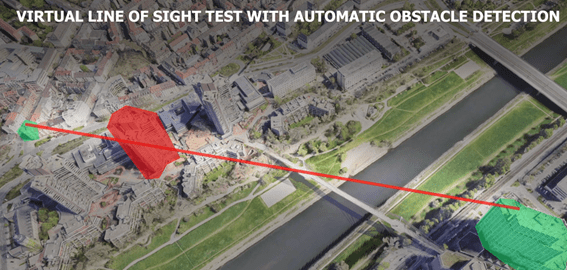Many network management tasks are still performed manually, which is error-prone and time-consuming. Digital twins facilitate the automation of tasks such as monitoring, troubleshooting, and optimization.
The two examples above are a demonstration of the power of the Digital Twin. A Network Digital Twin offers a dynamic virtual replica of a physical network, enabling real-time monitoring, simulation, and optimization. It addresses the complexities of network management, reduces downtime, accelerates troubleshooting, optimizes performance, and bolsters security. By providing a holistic view and predictive capabilities, it empowers administrators to proactively manage and improve network operations.
Reactive network management, where problems are addressed after they occur, can result in costly downtime. Digital twins enable scenario simulation and potential failure prediction, allowing for proactive management.
Identifying and resolving issues in complex networks can be lengthy and difficult. Digital twins streamline troubleshooting by providing real-time data and enabling the simulation of potential solutions.
Telefónica has ambitions to achieve Level 4 in autonomy in some network processes by 2025, as outlined in the TM Forum’s Autonomous Network Framework. O2 Telefónica in Germany, through the ANJ program, is closing the gap between current automation levels and Level 4. ANJ has the objective to transform the current process by adding these new capabilities.
O2 Telefónica in Germany was working and putting a lot effort to develop a network digital twin. Today it is a reality. It is accelerating the autonomy through knowledge and intelligence.
O2 Telefónica in Germany delivers NetOptimizer Environment
O2 Telefónica in Germany has developed a new analysis environment that maps the status of its mobile network sites and transport routes in real time. This environment is called “NetOptimizer” and as a digital twin enhances the network availability and customer experience.
Digital twins can be a useful tool to visualise and simulate O2 Telefónica’s infrastructure and service delivery. It also provides the ability to run simulations (e.g., how network changes impact services).

NetOptimizer provides a virtual representation of a physical network, mirroring its components, topology, and behaviour. It enables real-time monitoring, simulation, and optimization, empowering network administrators to proactively manage performance, troubleshoot issues, and plan for future expansions. By providing a dynamic and interactive view of the network, a Network Digital Twin enhances visibility, reduces downtime, and improves overall network efficiency.

The revolutionary way to apply a Digital Twin to operate the Network
O2 Telefónica in Germany proudly celebrates the successful attainment of TeleManagement Forum (TMF) Level 4 autonomy in the configuration of its IP and microwave network. This achievement marks a significant step forward in operational efficiency, reduced manual intervention, and the optimization of the company’s resources.

The attainment of TMF Level 4 underscores O2 Telefónica’s commitment to operational excellence and the adoption of industry best practices. This success is the result of the hard work and dedication of a multidisciplinary team that has collaborated closely to achieve this ambitious goal.
The benefits of this increased autonomy are manifold:
- Enhanced operational efficiency: Automation of repetitive tasks and reduction in the need for manual intervention. 80% less time for analyses for Network Planning, Operations and Optimization
- Reduced errors: Lower probability of human error in network configuration and management. 40% less capacity issues in the Transport Network.
- Improved network availability: Quicker response capability to potential incidents and proactive optimization of performance. Reduction of Sites with high capacity load (and with massive customer impact) by more than 90%.
- Resource optimization: Freeing up technical personnel for higher-value strategic and innovative tasks. Network performance optimization is often based on running various trials, which can be inefficient and disruptive. NetOptimizer enables the simulation of different configurations and virtual performance optimization before implementing changes in the physical network. Improved latency by 5%.
O2 Telefónica in Germany continues to invest in automation and artificial intelligence to further advance the autonomy levels of its network with NetOptimizer, with the aim of providing communication services of the highest quality and proactively adapting to the demands of the digital future. This achievement in IP and microwave network configuration sets an important precedent on this path towards excellence and continuous innovation.










